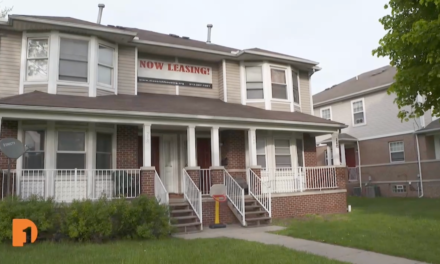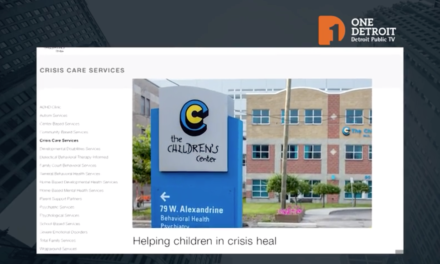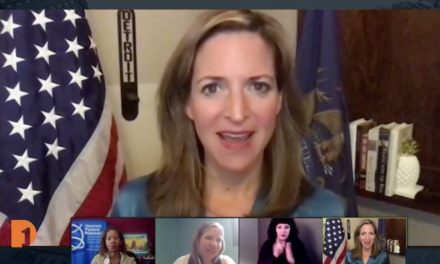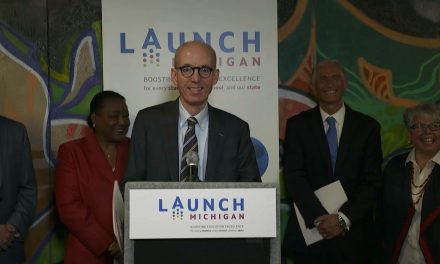The big overarching decisions that are happening at districts are made by the superintendents and administration. Each district has to cater to what their specific school community needs.
Christy checks in with Dr. Rich Machesky, Superintendent of Troy Schools, Mark Greathead, Superintendent at Woodhaven-Brownstown School District, Mike Devault, Superintendent Macomb ISD, and Dr. Alesia Flye, Chief Academic Officer for Macomb ISD.
Read the full transcript below:
Christy McDonald
I’d like you, each one of you, to describe your district briefly. And as of this week, whether you’re in seat online, if there’s a hybrid, what your school community has chosen and how many are opting to come back.
Dr. Rich Machesky, Superintendent, Troy School District
So if I could start with you, Rich and Troy are absolutely so in Troy. We are we’re in our hybrid model right now, which for us is five days at the elementary and four days for all students wishing to to take part in seat and instruction at the secondary level. So six, 12, approximately 60 percent of families in Troy have chosen to remain virtual, which means there are 40 percent total of about 40 percent of families choosing to be in seat, about 50 percent of those at the elementary level, about 40 percent of school and about 30 percent at the high school level. So we are fortunate to have those that wish to be in seat in seat for a good portion of the week in Troy.
Christy McDonald
OK, Mark, give us an idea of what’s happening. Woodhaven, Brownstown School District, what your situation is right now and what the community has decided in terms of opting in.
Mark Greathead, Superintendent, Woodhaven-Brownstown School District
Certainly beginning in September, we offered our parents and our students a choice. 60 percent chose to come to school on a daily basis. Grades K through 12, 40 percent chose to be fully remote. And we’ve been able to do that successfully since. With the exception of the November pause when high school students were paused, we also paused in-person education for grades K through eight as well right before winter break. In the weeks, the two weeks after winter break, we brought all of our students back in a every other day schedule, what we call our safe start to bring kids back gradually. But right now, for the last three weeks, we’ve had right back at that 60 percent in person every day and 40 percent remote. We’ve offered our parents the opportunity to change their mind at the card marking breaks. And each time we come to a transition, we get about 50 50. We get about an equal number that want to come in person as we do that want to transition to remote. And one of the things that we think is unique about the program that we’ve offered is all of our students are being taught directly by would even Brownstown school district teachers. So even our remote students, we have a very limited class size. We stick to it and we do that so that their transition back into the classroom can be as seamless as possible.
Christy McDonald
You know, it’s interesting to see the numbers flipped in the two districts that we’re talking about, which really just goes to the point that each district is making individual choices that services the people in their district, and that’s right for them. And that’s what’s so difficult, I think, when you talk across the board change or across the board and policies that you need to have in place, that it is so individualized to different districts and different demographic areas. Mike, let’s talk about Macomb. Give us an overview county wise about where you are in terms of seat online or combination.
Mike DeVault, Superintendent, Macomb ISD
Yeah, just for your listeners information, we have 22 districts, including the ised here within the county. About one hundred and thirty thousand students, give or take. So we have if I can just start with the ised with our special needs students. We’ve been in person since September 8th, but with an option of parents to choose remote and then the other twenty one districts, we’re we’re pretty much have all options on the table. We’ve got some districts that have 15 percent remote and others have 50. But of the twenty two districts and just last past couple of weeks, Chippewa and Utica have started their programs. So the majority of our districts are in-person education options. And I think that we’ve learned a lot from it and our parents appreciate it.
Christy McDonald
And so, Alesia, when we look at all of this and we hear from different districts across the area, we’re getting some questions from people who are in our town hall right now. Our superintendents are districts, and Estes is sharing within the within the counties about what they’re doing across the area, saying this is working for us, this isn’t working for us and looking at a shared set of data.
Dr. Alesia Flye, Chief Academic Officer, Macomb ISD
Absolutely, Christi. One of the things that that we’ve done since the school closure last spring, we meet last spring, we were almost meeting daily with our twenty one superintendents throughout Macomb County to do exactly what you’re describing. And we’ve continued to meet now. It’s about weekly. It’s at least once a week. But if something surfaces, we meet even more frequently. If we feel we come together, that we need to come together. And we’re having those exact conversations with the superintendents, report the status of where they are in terms of their instructional delivery and talk about what’s going well are things to consider as you transition. Because as superintendent above mentioned, with a county the size of Macomb County, we have a variety of options that are occurring. But each of our districts are almost all of our districts do have at least an in-person option. And what has been critical that we’ve heard from both Dr. McCaskey and then Mr. Greathead as well, is that that survey piece in terms of getting input from families and needing to be nimble and flexible, because as we’ve navigated just this unknown territory with all of us regarding the pandemic, our goal is to best meet our students and families needs and having their voice about where they are and their situations have been critical.
Christy McDonald
And this year, would you welcome let me start with you, Rich. Would you welcome that? We’re getting this question coming in right now, centralized decision making coming down from the state, or do you believe that the autonomy that the districts have is in the best interest of what you’re doing right now?
Dr. Rich Machesky, Superintendent, Troy School District
What we’ve talked about in Oakland County, we talked about this from the very beginning of the pandemic, is what we really wanted to see from the state were were more clear, was more clear guidance around what is considered safe and what is not. What are those thresholds that we should be looking at as a community because we’re not health officers. So if you could provide us thresholds that we should be considering as to when it’s safe and when it may not be safe, that’s all we would really want at the state level and then allow us at the local level to make those decisions based on the needs within our community.
Christy McDonald
Mark, I came up with a list of questions and I could talk to you guys forever, but I keep seeing the word challenge on my list of questions like what are the challenges? What are the challenges?
Let me ask you what has gone right during this entire process? And then what has been your biggest challenge.
Mark Greathead, Superintendent, Woodhaven-Brownstown School District
Choice has been what’s gone right. That that’s enabled us to try to provide support that can best meet the needs of the students, the students that we listened to earlier, hearing, hearing their anxiety just really hit me and it only starts to scratch the surface. So if I transition into challenges, challenges ahead for us or challenges that we’ve experienced and then the challenges ahead for us are having the resources and support that we need to address, not just learning loss, but also the social emotional impact that that the pandemic has had on our students. And that needs to start sooner rather than later.
Christy McDonald
Well, let’s get to the learning loss, there is a recent poll from Education Trust Midwest that came out. Eighty five percent of parents say state leaders should have a plan to address pandemic learning loss and make sure kids are back on grade level. Alesia, let me go to you.
How extensive do you believe the learning loss is? How can you measure it? And what plans are you working on in Macomb with Mike to address this.
Dr. Alesia Flye, Chief Academic Officer, Macomb ISD
Our our local districts have the they have the opportunity. They’ve administered local assessments. And so they’ve had the opportunity to look at and see where some of the learning loss is occurring, where some of the gaps are a little surprisingly. And this is reflected in some recent national data that we saw as well. We see a larger gap in mathematics than in reading as we were digging into some of our data. But districts are already talking and beginning to put plans in place to address that. In our county, we already offered a pretty robust summer learning opportunities for students. And we are we’ve begun planning even earlier for that and so that students can have the opportunity just to catch up on some of the learning that has been disruptive this year.
Christy McDonald
Rich, let me ask you let’s talk a little bit about safety and funding. Do you believe that you have the funding necessary to make sure that your schools are safe when kids roll back in, whenever the vaccine roll out, gets up and going and we have more of the community vaccinated?
Dr. Rich Machesky, Superintendent, Troy School District
I think I will give the state credit from the perspective of they have they have attempted to make funds available as quickly as as possible. I think we we continue to need we will continue to need more funds for things such as hiring counselors, for social workers, individuals to address to your point the social emotional well-being of of the the students within our community, because that’s going to last well down. I mean, people will go away, that those components are going to last well into the years, several years down the road. So I don’t think there’s enough funding with respect to making sure that we can retain individuals like that. The other key is giving us flexibility. Use the spending or the moneys where we see fit. Every community is different. What Macomb may need, it may be different than what we need in some areas in Oakland. So, having the resources but having the flexibility to utilize spend those resources where we most need them is also extremely important.









